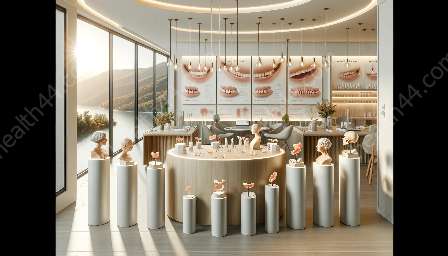Partial dentures play a crucial role in restoring a patient's ability to chew, speak, and smile confidently while enhancing overall oral health. Understanding the replacement and longevity of partial dentures is essential to ensure a comfortable and functional dental experience. In this comprehensive guide, we delve into the factors affecting the lifespan of partial dentures, the importance of regular maintenance and care, and the options available for replacement when necessary.
Understanding Partial Dentures
Partial dentures are removable dental appliances designed to replace missing teeth and surrounding tissues. They are custom-made to fit and match the patient's natural teeth and gums, providing a natural appearance and restoring oral functionality. Partial dentures consist of artificial teeth attached to a gum-colored base, often made from acrylic, metal, or a combination of both materials. The proper fit and function of partial dentures play a significant role in a patient's overall oral health and quality of life.
Factors Affecting Longevity
The longevity of partial dentures is influenced by various factors, including:
- Dental Hygiene: Regular cleaning and maintenance of both the partial dentures and remaining natural teeth are crucial in extending their lifespan. Proper oral hygiene practices, such as brushing, flossing, and using specialized denture cleaners, help prevent the accumulation of plaque, tartar, and bacterial growth.
- Oral Health: The overall condition of the patient's oral health, including the strength of the remaining natural teeth, the stability of the supporting gum tissues, and the bone density in the jaw, can impact the longevity of partial dentures.
- Material Quality: High-quality materials and superior craftsmanship contribute to the durability and longevity of partial dentures. Custom-fit dentures made from premium materials are less prone to wear and tear, ensuring a longer lifespan.
- Wear and Tear: Over time, partial dentures may experience wear and tear due to regular use, chewing forces, and natural aging. Factors such as grinding, clenching, or poor bite alignment can accelerate the wear on denture components and decrease their longevity.
Importance of Regular Maintenance
Regular maintenance and proper care are essential to preserve the longevity and functionality of partial dentures. Patients should adhere to the following maintenance guidelines:
- Cleaning: Partial dentures should be cleaned daily using a soft-bristled brush and mild denture cleaner. It is important to avoid using abrasive toothpaste or harsh chemicals, as they can damage the denture materials.
- Soaking: To prevent dryness and maintain the shape of the dentures, they should be soaked in a denture solution or plain water when not in use. This helps to keep the dentures hydrated and prevents warping or distortion.
- Dental Check-ups: Regular dental check-ups are critical for assessing the fit and condition of the partial dentures. Dentists can make necessary adjustments or repairs to ensure optimal comfort and function.
- Handling with Care: Patients should handle their partial dentures with care to avoid accidental damage. Dentures should be removed over a soft surface, such as a folded towel or basin of water, to prevent breakage if dropped.
Options for Replacement
Despite proper maintenance, partial dentures may require replacement due to wear, changes in oral health, or physical damage. When considering replacement options, patients have several choices, including:
- Denture Relining: If the base of the denture is in good condition but the fit has become loose due to changes in the patient's oral tissues, a denture reline can improve the fit by adding new material to the existing base.
- Denture Rebasing: In cases where the base of the denture is worn or damaged, but the artificial teeth are still functional, a denture rebasing involves creating a new base while retaining the existing teeth.
- New Partial Dentures: If the existing partial dentures are extensively worn, broken, or no longer provide a proper fit, the most suitable option may be to fabricate new partial dentures to ensure optimal comfort and function.
- Dental Implants: For patients seeking a more permanent and stable solution, dental implants can be considered as an alternative to traditional partial dentures. Implant-supported prostheses offer enhanced stability and eliminate the need for removable appliances.
Conclusion
Replacement and longevity are significant aspects of caring for partial dentures, ultimately impacting the patient's oral health and quality of life. By understanding the factors affecting longevity, following proper maintenance practices, and exploring replacement options when necessary, patients can ensure the continued comfort, function, and aesthetics of their partial dentures. Regular communication with their dentists and prosthodontists is essential in addressing any concerns and making informed decisions for optimal oral health and well-being.


